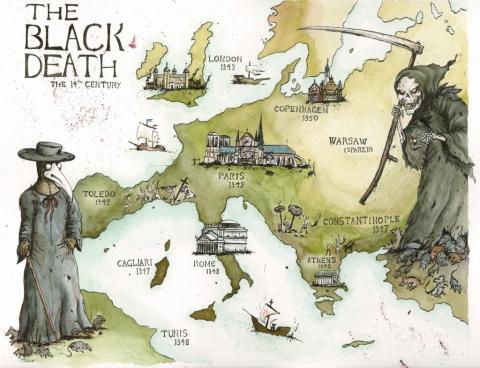This watercolor map, by Sean Twiddy, provides a view of 14th-century Europe and the places where "The Plague" spread. Copyright, Sean Twiddy, all rights reserved. Image provided here as fair use for educational purposes and to acquaint new viewers with Twiddy's work. Click on the map for a better view.
This is the end of the world.
Contemporary Chronicler, 1348
Bubonic plague. A bacterial disease so lethal and so fast-spreading it still causes people to worry about epidemics.

The affliction, if caught early, can be successfully treated (although the pneumonic form is often deadly despite early intervention).
In the Middle Ages, when "elements and humors" were part of the medical process, catching the disease early was never an option. At a time when doctors diagnosed illnesses by the color of urine and treated patients by "bleeding" them, no one had a clue how to prevent, or cure, what people at the time called "The Pestilence."
The Pope (Clement VI) called for an inquiry to determine what was happening. Scholars assigned to brief him reached a less than scholarly conclusion. (At the time, and for many years later, physicians believed that medicine and astrology were linked.)


 First Chapter
First Chapter



